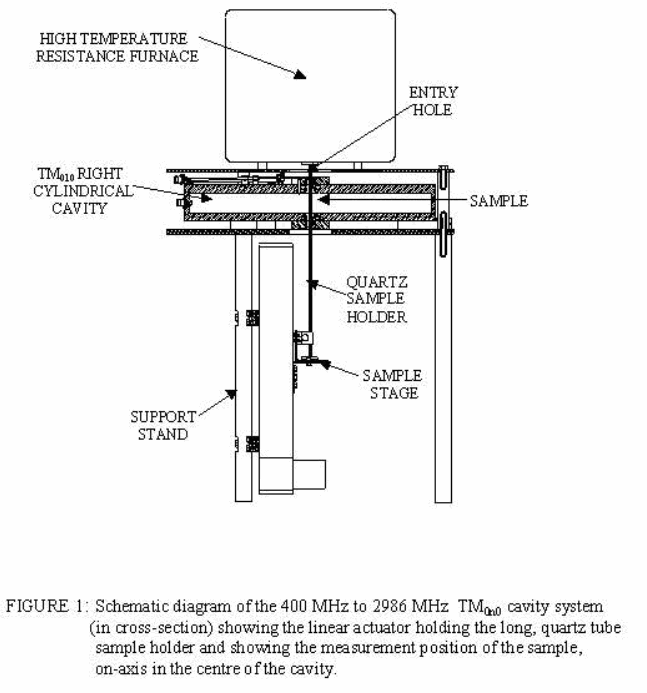MPN measures dielectric properties ( permittivity) over two overlapping frequency ranges, 50 to 600 MHz, and 400 to 3000MHz, using the perturbation technique and two separate cavity systems. The measurements yield the real (ε′) and absorptive or “imaginary” (ε′′) components of the relative ( ie., unitless) dielectric constant, and thus enable the calculation of tanδ and the microwave penetration depth in a material.
MPN measures permeability ( ie., magnetic properties) over the frequency range 900 MHz to 2800 MHz, using the same technique but with a special cavity, where a perpendicular DC magnetic bias ( up to 3kGauss) can be applied if required.
The required sample size is very small, ~ 0.1 cc for the high frequency range, and ~ 1 cc for the low frequency range. Thus samples can be shipped to us by standard mail or courier – even hazardous materials can sometimes be shipped this way because of the small amount of material required.
Our preferred sample shape is a right cylinder, ~5.5 mm diameter and ~ 30 mm long for the low frequency cavity , ~3.5 mm diameter and ~ 12 mm long for the high frequency.
The measurement systems use a long, high purity amorphous silica tube to rapidly transport the sample back and forth between the furnace and the cavity (see the section on “Cavity Perturbation Technique Details”). The high frequency system uses a 4 mm inside diameter (ID) tube ( ie., sample holder), while the low frequency range system uses a 6 mm ID tube.
We have punches and dies for pressing materials to the required sample size. We also do custom diamond core-drilling or honing to produce solid samples ( eg., ceramics or glasses).
The sample volume and mass are carefully measured before and after measurements, so that sample density is monitored. In special cases, post-measurement sample treatment is done to determine initial and final sample moisture content.
The system can run with many possible cover gases, at up to 5 atmospheres pressure.
Questions that need to be discussed before doing measurements:
- What temperature range is required ?
- What frequency range is of prime interest ?
- What cover gas is required ?
- What is the physical state of the samples, and how can they be prepared to fit into our sample holders ?
- What is the chemical reactivity of the sample to water, solvents , and to our sample holder ?
- What temperature versus time curve is desired - i.e. does heating rate matter ?
- Will the volume of the sample change during the coarse of the measurement – what is the linear thermal expansion coefficient?
- Do you expect there will be any phase or chemical transitions over the temperature range of the measurement – will any gases be evolved?
- What density do you require the measurements to be done at?
- How many samples are to be measured ?
We like to be in regular communication with a client during the course of a series of measurements. It has been found beneficial to send preliminary results to the client and to jointly discuss and interpret them immediately. Our usual maximum term of confidentiality is 5 years.
Our measurement cost depends on the sample preparation time , the cover gas , the details of the temperature versus time curve required, the number of samples, and how formal you wish the final report to be. Sample preparation is usually a significant part of the whole measurement process, so it needs to be discussed in some detail before costing measurements. There is usually a one-time initial set-up charge to set up the system for the individual requirements of each client.
Please feel free to phone or e-mail and discuss possible measurements. We treat all communications as confidential unless advised otherwise.

